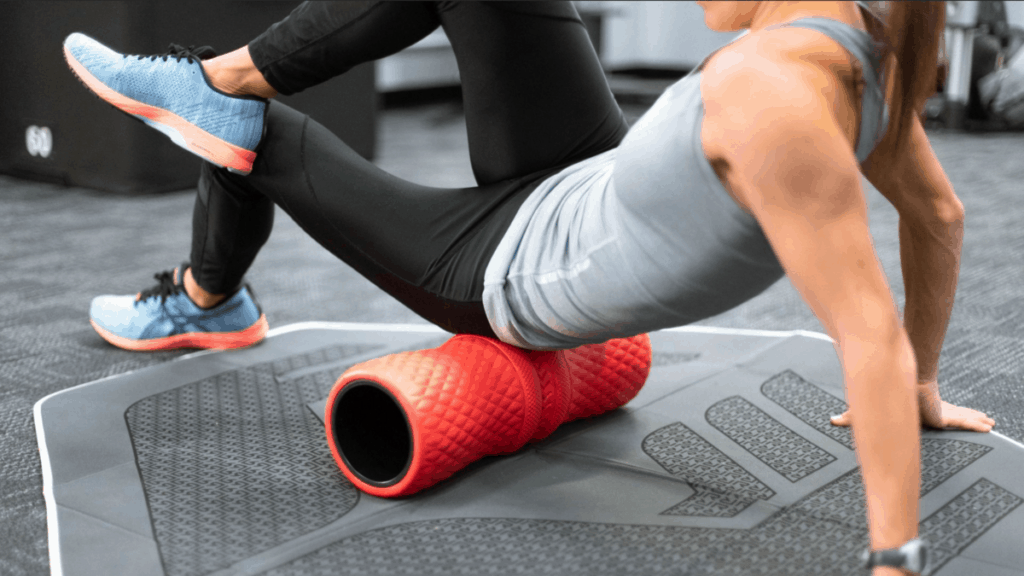
Recovery is as vital for trail runners as it is for other long distance Runners as well as endurance sportspeople. How well you are able to recover will determine when you can get back out for your next run.
Cool Down
The first step toward recovering for my next trail run is the process of the cooldown that comes at the end of the run that I’m currently doing. That involves slowing down towards a gentle jog over the last mile or so and finishing off with a couple of minutes of walking to round out my run.
Hydrate
The first step toward rehydrating at the end of your trail run is by finishing the water bottle that you have had with you. Drink the last of that bottle while doing your cool down at the end of your run.
Then make sure you have another bottle of hydration ready for you when you get home, or if you’ve driven out to the trailhead, have an extra bottle of hydration ready for you when you get back to your car. Finish that extra bottle as soon as possible.
Remember that your hydration includes not just water but replenishing the electrolytes that you would have sweated out together with the liquid. When it comes to hydrating, water with electrolytes is absorbed into the body faster than plain water.
However, if plain water is all that you have available to you then that is most certainly better than nothing at all.
Stretching
The act of stretching after the cool down. Full disclosure, stretching is something that I hardly ever do. So when I hobble around on stiff and sore legs it is 100% my own fault because I know what I should be doing.
On the rare occasions when I do some stretching I get the feeling of squeezing the lactic acid out from between my muscle fibers like toothpaste from a tube.
So, if I was more diligent with my stretching routine after my runs out on the trails it would go a long way to prevent delayed onset muscle soreness.
Refuel
It is important to get calories into your body within 60-minutes of completing your trail run. If it is at all possible, get those calories into your system within 30 minutes.
The calories consumed toon after completing a run tend to get absorbed more quickly into your body to replace the glycogen stores that have been depleted.
Another aspect of getting used to refueling really quickly after the end of your trail run is that it helps your gut adapt to coping with refueling at an aid station during a really long-distance trail run race.
Get Comfortable And Clean
One of the things that help you to feel really great at the end of your trail run is by getting through a shower really quickly.
I love that clean and refreshed feeling especially after I have gotten an early morning trail run. It puts me in the right frame of mind to get the most from the remainder of my day.
Something that you can do after having finished your shower and getting into comfortable clothing is to put on a pair of compression socks or compression calf sleeves. They will help your recovery process over the course of that first hour or two after your run.
Reflect On Your Run
Something that you can do to pass the time once you’ve finished showering and putting on your compression socks is to get comfortable and upload the data from your run to whichever tracking application that you’re using.
Maybe you’ve taken some pictures along the way that you may feel like sharing on social media. This post-shower recovery time is a good time to do that one.
For instance, STRAVA has a feature called flybys where you can see the runs and routes done by anybody that passes you either in the same direction or the opposite direction to you during the course of your run.
So by dropping them a comment congratulating them on their run may potentially lead to a new running buddy. Even if that doesn’t happen, it can still be a motivating factor to help you get out on your next trail run.
Foam Rolling
As soon as you are comfortable after your shower, the sooner you roll your legs and ITB the better.
Even if you don’t have the time to do so straight away, it is important to do something during the course of the day as part of your recovery.
I like to get my foam rolling done during that early relaxation and reflection time straight after I’ve had my shower because my muscles are nice and warm.
Get Some Rest
Here in Spain, we have a tradition of taking a siesta. A siesta is a really good way of helping you recover better. If you are not able to take a siesta then make sure you get a power nap in during the course of the day.
Make sure that you get to bed early especially if you do your training first thing in the morning because good rest and sleep vital to be able to recover well.
Recovery Run
If you have a particularly hard workout there is the temptation to take the remainder of the week off.
Your biggest improvements come as a result of consistency. Therefore it will be in your best interests to stack in some recovery runs on the days following your big heavy workout.
What I classify as a recovery run is around 30 minutes at an intensity no harder than what I use for my warm-up.
This means that I get to the end of my recovery run with legs that are thoroughly warmed up but carrying no real fatigue. I can then do some stretches or foam rolling to round out the recovery run.
I find that this helps my leg muscles recover much faster than just taking multiple rest days.
